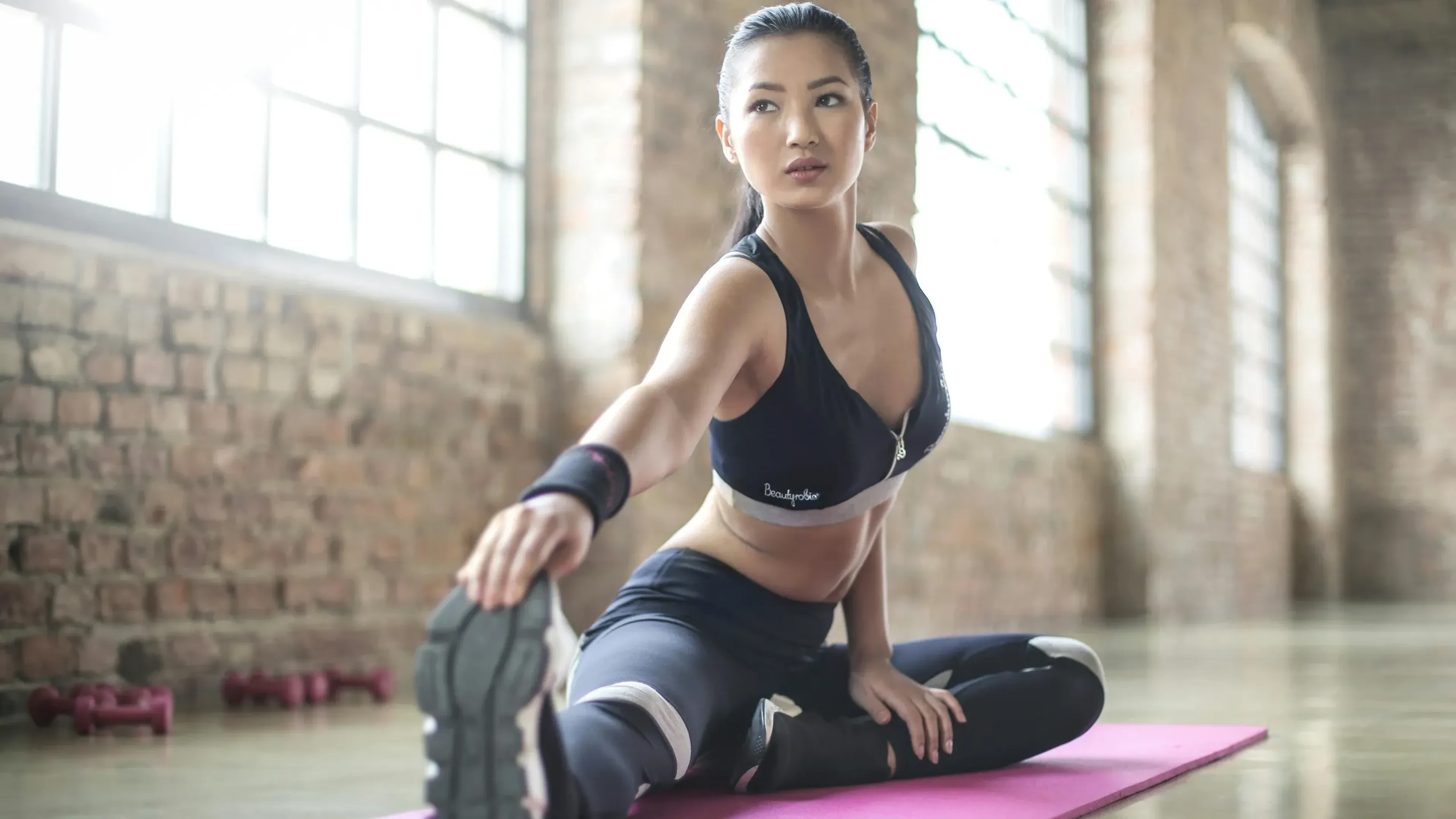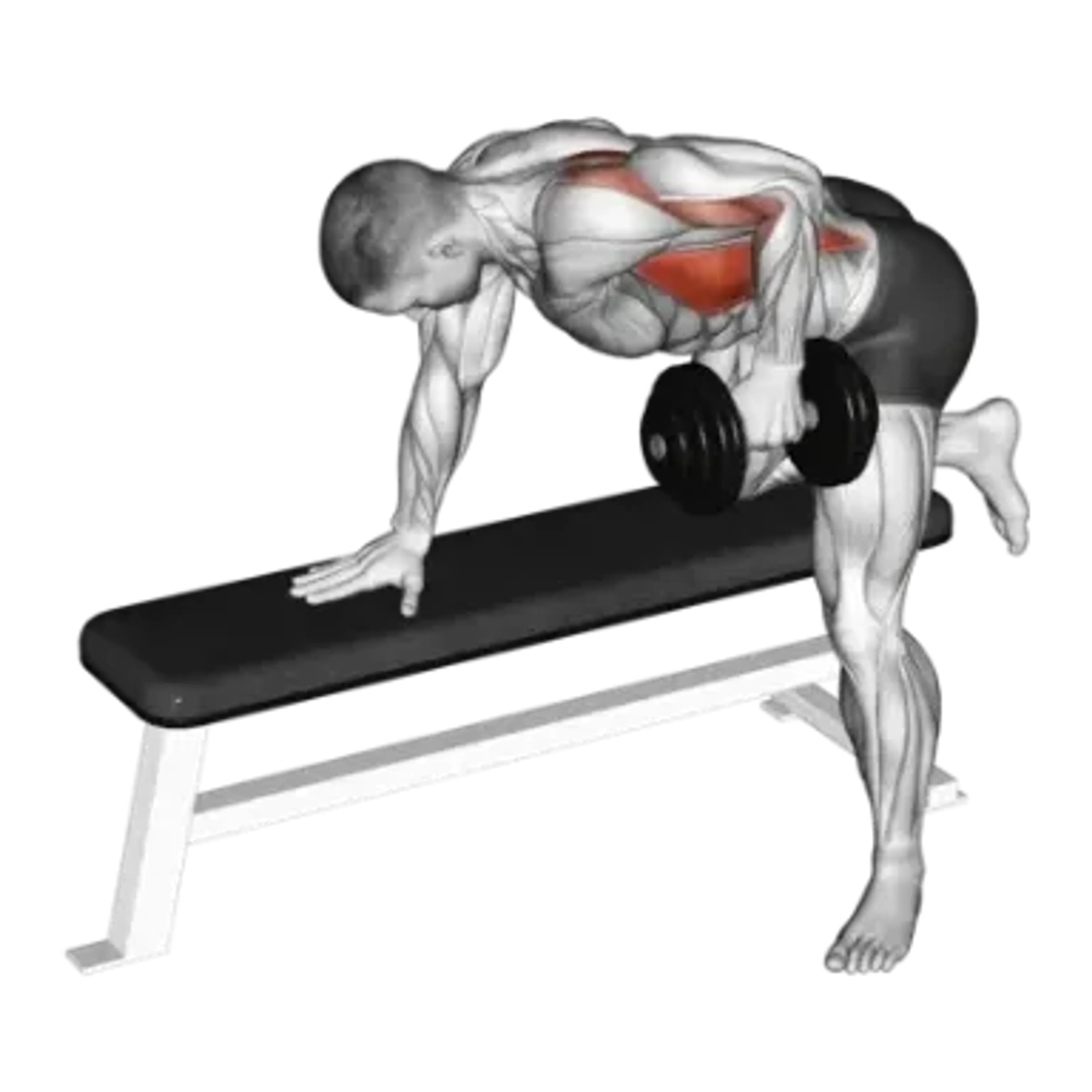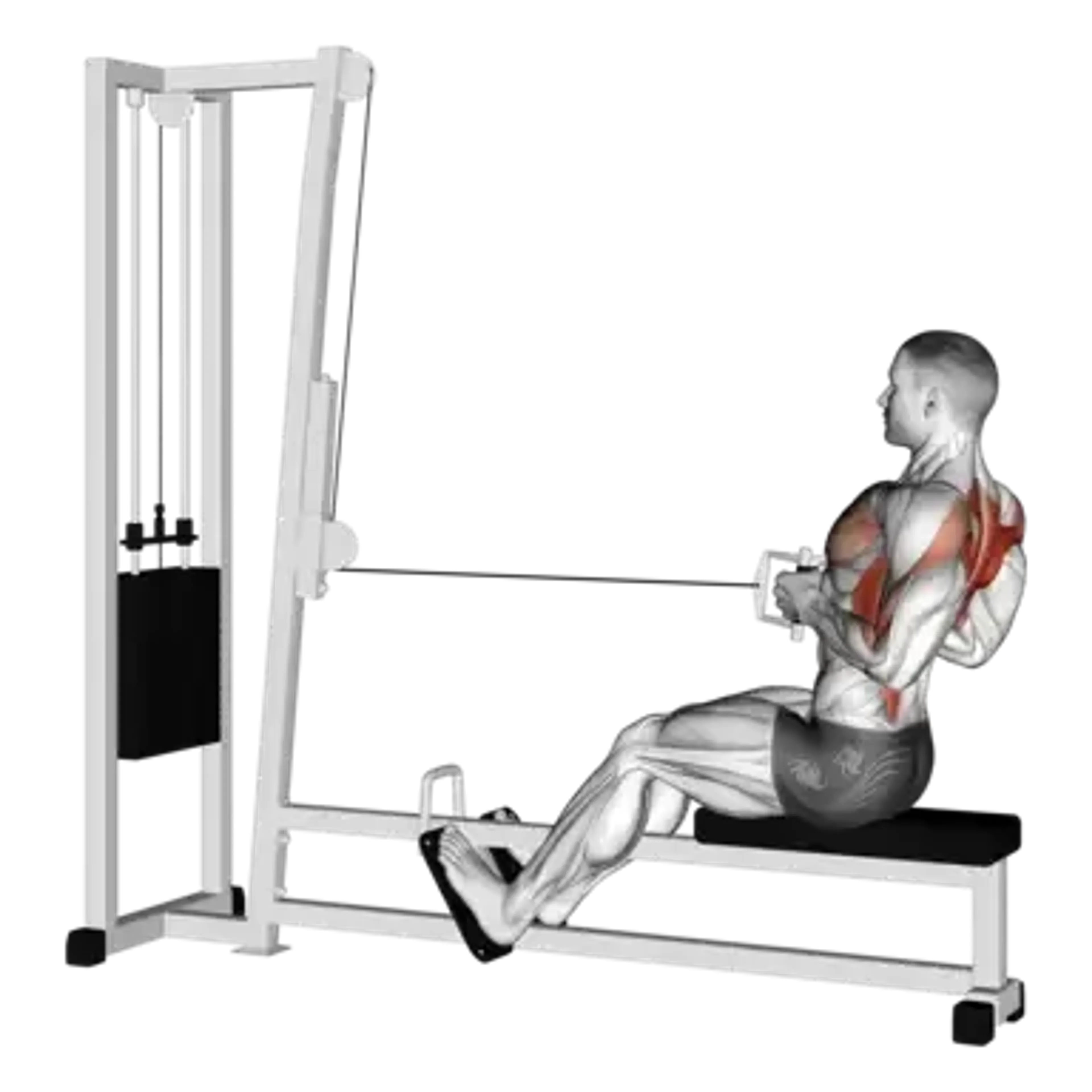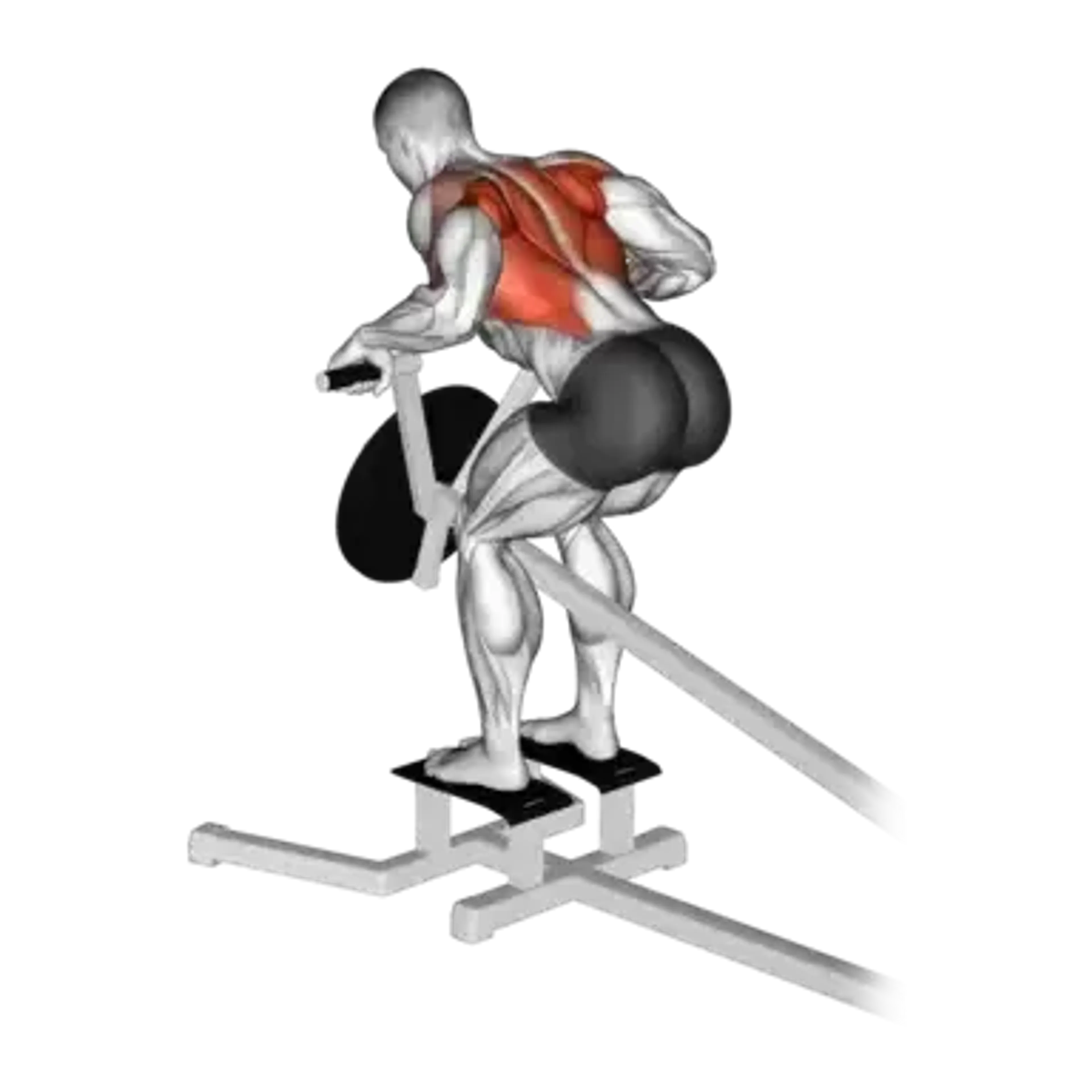Band Single-Arm Seated Row

Overview
- Primary Focus:
- Back.
- Equipment:
- Resistance bands.
- Difficulty:
- Beginner.
General Information
Band Single-Arm Seated Row is a compound exercise that primarily targets the back and also engages the biceps and core. It is a beginner-level movement that improves unilateral control and helps address side-to-side imbalances.
The single-arm setup encourages anti-rotation, teaching you to keep the torso square while the arm pulls. Bands provide smooth resistance and make it easy to adjust difficulty without machines.
Use this for activation, hypertrophy with higher reps, or as an accessory on days when you want minimal spinal loading. It pairs well with presses to balance shoulder volume.
Muscles Worked
- Latissimus Dorsi
- Primary
- Lower Trapezius
- High
- Rhomboid Major
- High
- Biceps Brachii
- Medium
- Deltoid
- Medium
- Erector Spinae
- Medium
- Teres Major
- Medium
- Brachialis
- Low
- Brachioradialis
- Low
- Infraspinatus
- Minimal
Instructions
- Sit tall with a neutral spine and loop the band around your feet or a low anchor.
- Hold one end in the working hand; place the other hand lightly on your torso to remind you to stay square.
- Set the shoulder down and back; brace gently without holding your breath.
- Row the handle toward the lower ribs, keeping the elbow close and the torso still.
- Pause briefly and squeeze the shoulder blade toward the spine without shrugging.
- Return under control until the arm is long, maintaining tension on the band.
- Complete all reps on one side, then switch hands and repeat.
Common Mistakes
Injuries
Band Single-Arm Seated Row is a low risk exercise when performed with proper technique.
Avoid twisting through the torso or letting the shoulder roll forward at the bottom. Keep the ribcage stacked and focus on moving the shoulder blade smoothly.
If discomfort arises, reduce band tension, shorten the range slightly, and slow the tempo. A neutral grip often feels friendlier on the shoulder and wrist.
Stop if you experience sharp pain, numbness, or symptoms that persist despite lighter tension and rest between sets.
Alternative Exercises

Frequently Asked Questions
- Q: Which hand should I start with?
Start with your weaker side first to prioritize quality and set the rep target. Match the same controlled reps on the stronger side.
- Q: How should I breathe?
Exhale as you row in and inhale as you return. Keep light tension through the midsection without holding your breath.
- Q: What tempo works best?
Use a smooth pull with a 1-2 second concentric, brief pause, and a 2-3 second controlled return to keep tension on the back.
- Q: Should I let my shoulder blade move?
Allow a small, controlled reach at the bottom and then retract as you pull. Avoid collapsing the shoulder or rounding the back.
Overview
- Primary Focus:
- Back.
- Equipment:
- Resistance bands.
- Difficulty:
- Beginner.




